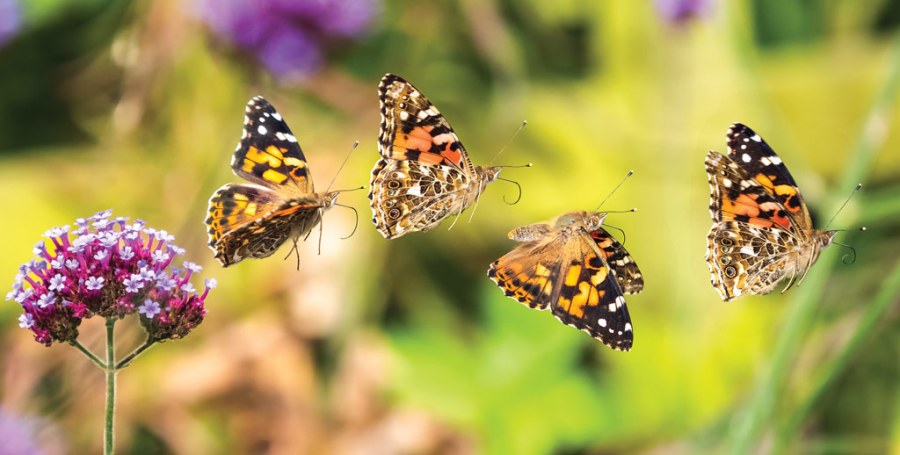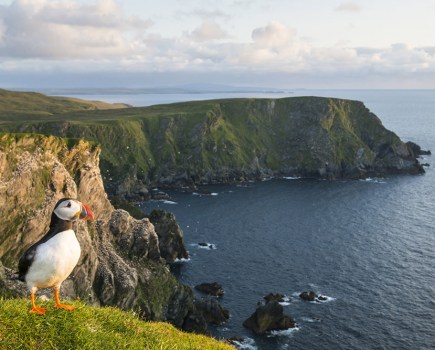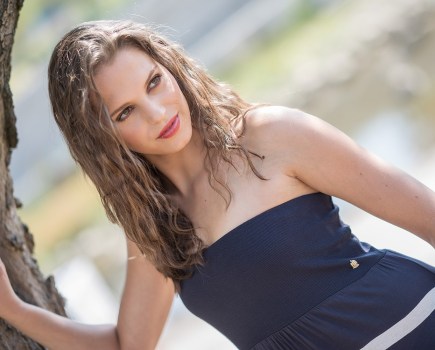Top wildlife and nature photographer Andrew Fusek Peters talks about his new book and the five years he spent travelling around the UK observing and photographing butterflies. Don’t miss his top tips on how to photograph butterflies, kit recommendations, and more.
Butterflies are a fascinating subject to shoot, but it requires careful planning and execution, as top wildlife and landscape photographer, Andrew Fusek Peters, reveals below. If you are inspired by his stunning images, check out our guides to shooting insects this spring, as well as wildlife photography and macro photography.
As I sit down to chat with Andrew Fusek Peters about his new book, Butterfly Safari, there are many questions I want to ask him, but one in particular has been bugging me since I saw one of his extreme close-ups of a Speckled Wood. ‘Why do some species of butterfly have hairy eyes?’ I blurt out. ‘There’s a theory that because they like faeces they don’t want to be dunking their eyes in it, so the hairs prevent them from getting too close,’ he laughs. ‘They’re so weird.’

Single exposure of a female Common Blue against the Milky Way, The Bog, Stiperstones: Canon EOS 5D Mark IV, 15mm, 30sec at f/4, ISO 2000
There’s so much we still don’t know about butterfly behaviour, but books like Andrew’s are perfect for sparking curiosity and, ultimately, aiding conservation efforts. Having spent the best part of five years travelling around the UK observing and photographing these slim-bodied insects, Andrew is clearly bewitched. ‘I know butterflies are called lepidoptera, which means scaly wing, but when you look closely at the antennae of a Small Tortoiseshell even that is covered in thousands of scales,’ he explains. ‘It’s insane!’
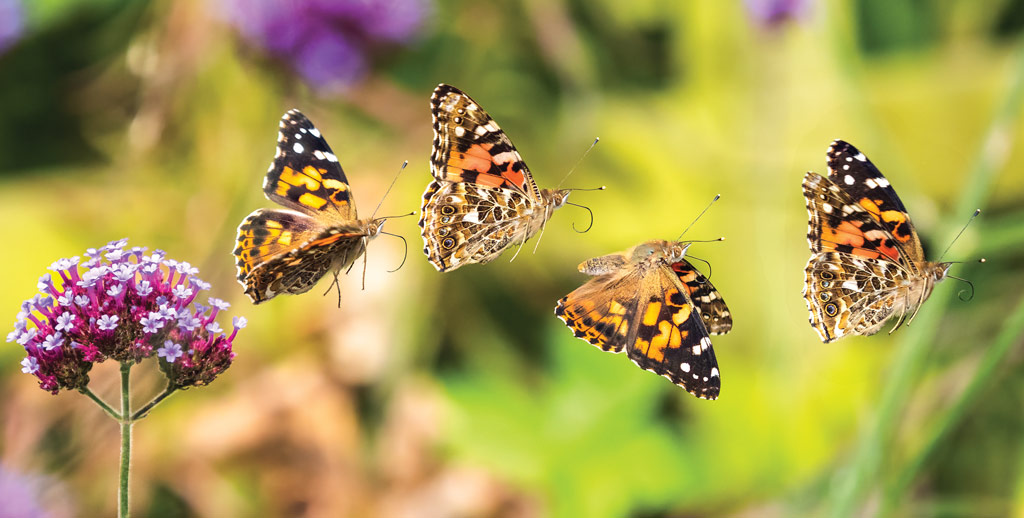
Painted Lady flight sequence / OM Digital OM-1, 80-300mm, 1/4000sec at f/8, ISO 1000
Planning a butterfly photography project
Andrew began his butterfly odyssey in 2018, in the midst of a serious health crisis. ‘I had been diagnosed with bowel cancer, and I was really quite ill,’ he reveals. ‘While I was waiting for surgery, I sat in my garden and watched the butterflies come and go.’ As he observed these fascinating animals, he identified a correlation between his own condition and their wonderful blend of strength and vulnerability. ‘There was a fragility about them, but there was also life, flight and hope,’ he recalls. This observation proved inspiring, and it wasn’t long before an idea for a project began to form in his mind.
‘I started to wonder why nobody was photographing butterflies in flight,’ he recalls. ‘I’m not saying it had never been done before, but I hadn’t really seen it.’ Andrew’s question was answered when he attempted the technique himself. ‘Butterflies can take off in any direction,’ he laughs. ‘It’s a total nightmare!’ In the beginning, he was firing off thousands of frames just to get one in focus, but the odds improved greatly once he started to observe and understand the insects’ behaviour.
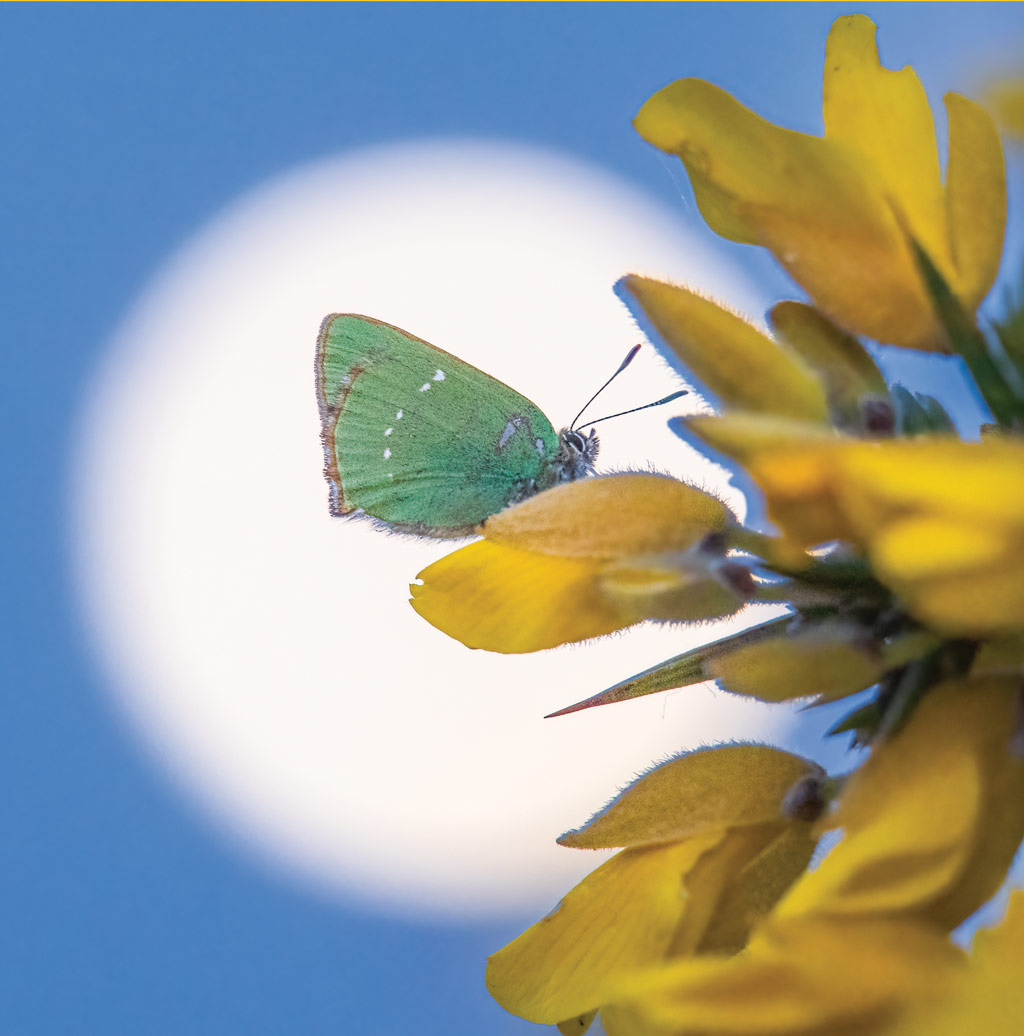
Green Hairstreak under the rising moon, Stiperstones: OM Digital OM-1, 40-150mm, 1/100sec at f/4, ISO 2500
Once Andrew had pictures of single butterflies in flight, he decided to up his game and record flight sequences, eventually moving on to wideangle flight shots, which allowed him to include plenty of the insect’s natural habitat. It has taken him years to perfect his technique, so when people ask him to reveal his secrets, he’s understandably reluctant! ‘People ask me about the camera settings I use, and I say, “If it were that simple, we would all be butterfly photographers,’” he laughs.
What are the best camera settings for butterfly photography?
For him, the camera is a tool, albeit a good one, and the secret to obtaining successful flight sequences lies in hours and hours of watching and waiting. ‘There are no shortcuts,’ he says. ‘Every one of the pictures in the book was very hard won.’ But, not wanting to discourage, he advises starting with an understanding of how fast butterflies move.
‘The smaller ones are so fast that you need a shutter speed of 1/5000sec or more, but you can get away with less for the larger ones,’ he says. He makes the most of the impressive burst rate on his Olympus cameras to record the flight path of a butterfly and then layers these up to show, ‘Movement through space and time in a single final shot’.

Swallowtail flight sequence, the Doctor’s Garden, Strumpshaw Fen: Olympus E-M1X, 150-400mm, 1/4000sec at f/5.6, ISO 1000
Butterfly conservation efforts
Time spent in the field proved cathartic for Andrew and he has very fond memories of afternoons lying on hot hillsides, his eyes trained on butterfly habitat. ‘When I was in the Scottish Borders looking for a Scotch Argus, I had an entire estate to myself,’ he sighs. ‘Afterwards I jumped in the river for a swim.’
The book, he hopes, will help people to see the wonder of what’s underneath their noses, while also highlighting the conservation issues many butterflies face. ‘We’ve got the Big Five in Africa, and I think the conservation work there is really important,’ he says, ‘but I’ve seen a million pictures of rhinos, as well as tigers. In fact, I’ve seen a tiger playing Rachmaninov with three penguins on its back, if you know what I mean!’
Andrew fears his book will become an epitaph to butterflies if people fail to act. ‘When I think about it, I start crying,’ he admits. ‘I don’t think you can work as a wildlife photographer for many years without getting involved in conservation or trying to raise awareness. If you’re not adding anything to the equation, then it strikes me as slightly narcissistic.’
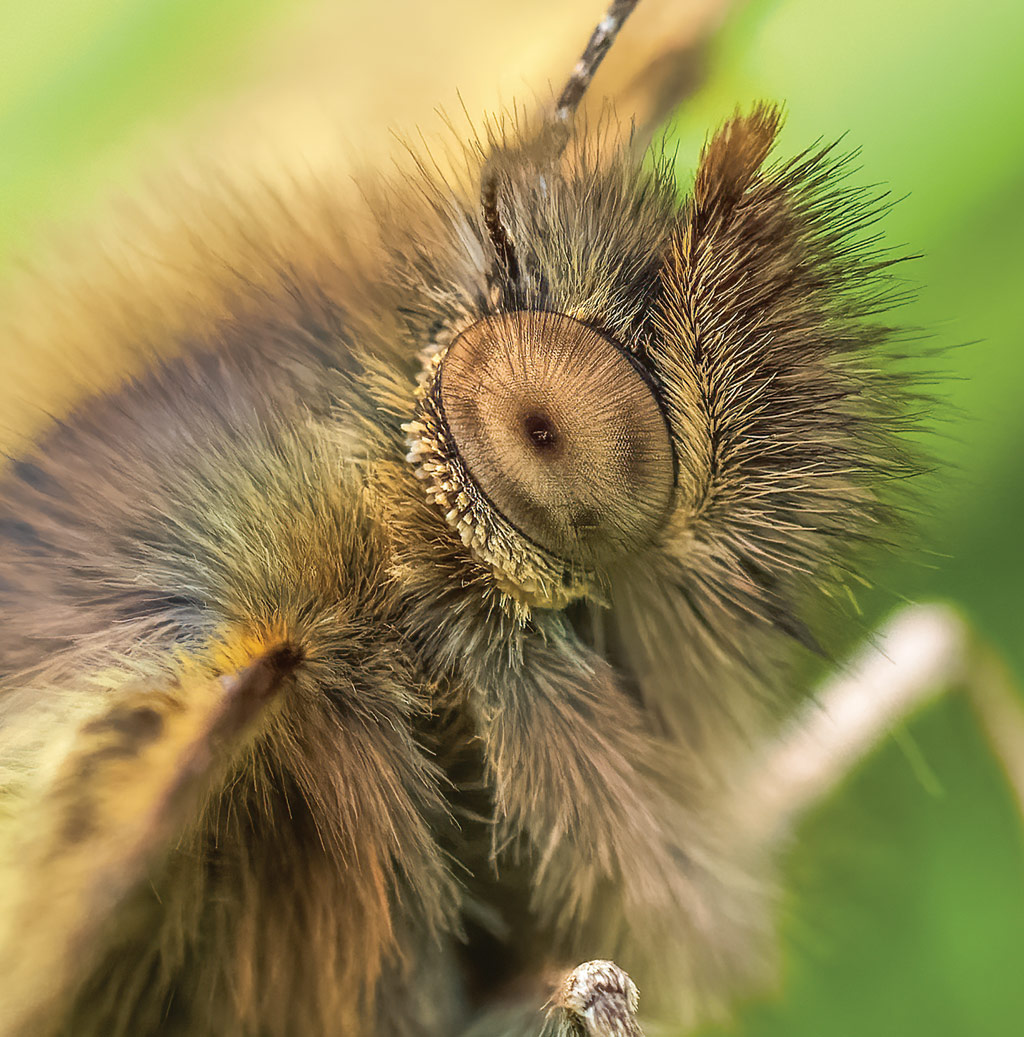
The eye of a Speckled Wood
Olympus E-M1 Mark III, 60mm, 1/400sec at f/5, ISO 1000
The importance of butterfly conversation in photography
Andrew is incredibly grateful for the help he received while working on the book and is keen to stress that members of the butterfly fraternity were generous when it came to sharing information. As a ‘pay-it-forward’ gesture, he decided to include location details alongside the pictures that appear in Butterfly Safari.
‘To be honest, if you visit the Isle of Wight and ask a bus driver where to find a Glanville Fritillary he or she will immediately say “Compton Bay”,’ he laughs. ‘These places don’t tend to get busy, and unless you get your eye in and know exactly what you’re looking for you won’t see anything.’ What’s more, citizen science has an important role to play in butterfly conservation. ‘There’s so much work to be done, particularly in terms of finding out where certain species roost,’ he adds.
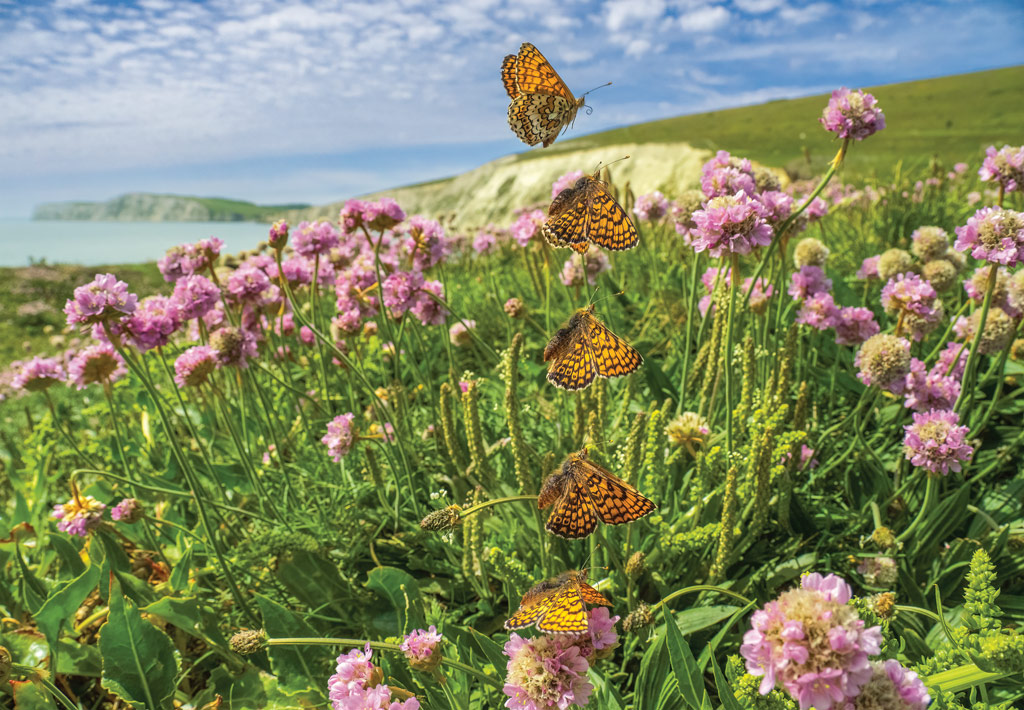
Glanville Fritillary wideangle flight sequence, Compton Bay, Isle of Wight / OM Digital OM-1, 12-100mm, 1/5000sec at f/8, ISO 1600
Andrew is a busy man: he squeezes our conversation in between photographing Marsh Fritillary larvae in Wiltshire and Purple Emperor larvae at an undisclosed location. His excitement is palpable, and his enthusiasm will soon be channelled into another butterfly book, due out next year.
‘This one will feature poetry, myths and facts as well as photography,’ he explains. ‘The goal for me is not to have a single picture from Butterfly Safari in this new one. It’s going to be fun!’ As Andrew and I say our goodbyes, I can’t help thinking about all those afternoons on sun-baked hills that await him. It seems a fitting reward for someone who has been through so much.
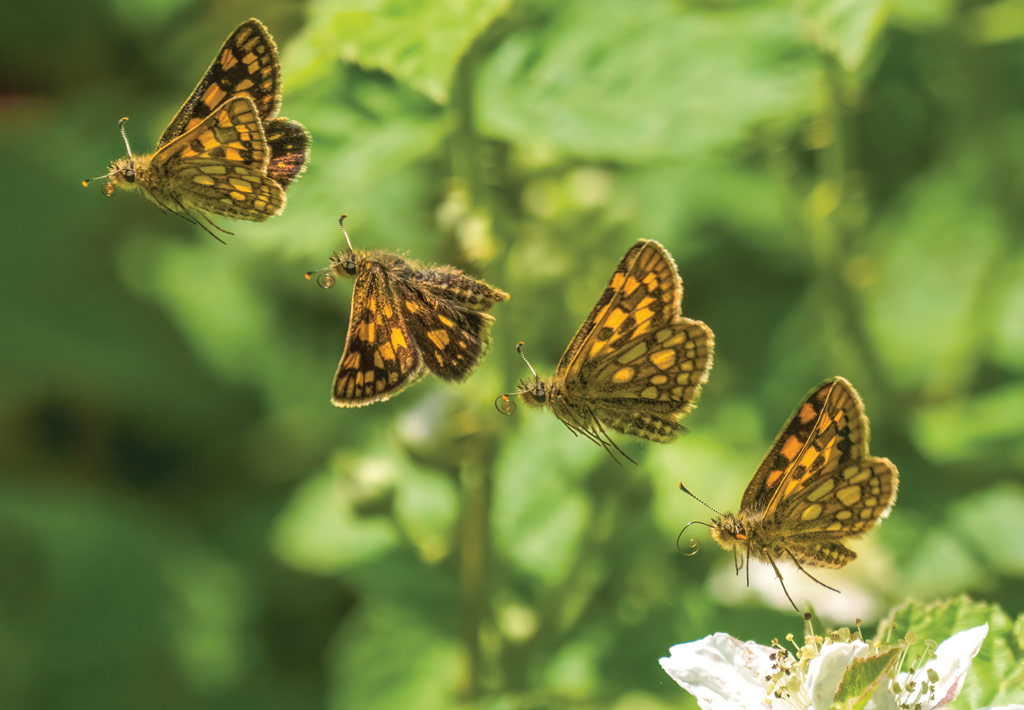
Chequered Skipper flight sequence, Fineshade wood
OM Digital OM-1, 80-300mm, 1/4000sec at f/8, ISO 1000
How to photograph butterflies: Andrew’s top tips
1. Research behaviour
Butterflies might seem unpredictable (especially when in flight), but if you spend time studying their behaviour you will begin to notice patterns. Time spent ‘in the field’ is the best way to learn. There are no shortcuts.

2. Keep the eyes sharp
Make sure the eyes of the butterfly are sharp. Depth of field is seriously limited when you’re shooting this close to a subject, but if the eyes are sharp, it doesn’t matter as much if the wings or antennae are out of focus.

3. Provide context
Photographing a butterfly in its natural habitat can be rewarding, but it’s also challenging. Backgrounds can be messy, with unwanted vegetation in the frame. Don’t let this bother you – the benefits of shooting ‘in the field’ outweigh the drawbacks.
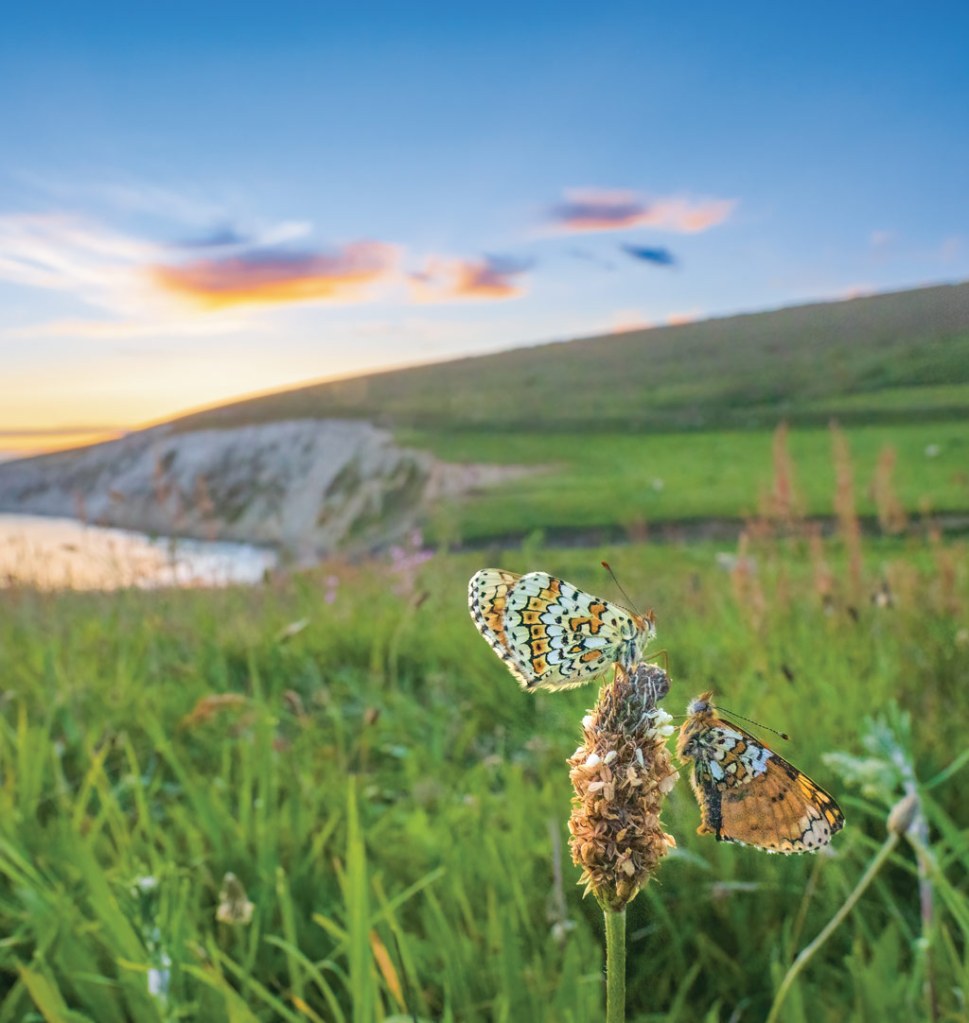
4. Check the weather
When you’re photographing butterflies in flight, you need warm weather because that’s when they’re most active. For portraits you might need a cooler day. When it starts raining butterflies seek shelter, but there are still picture opportunities to be had.
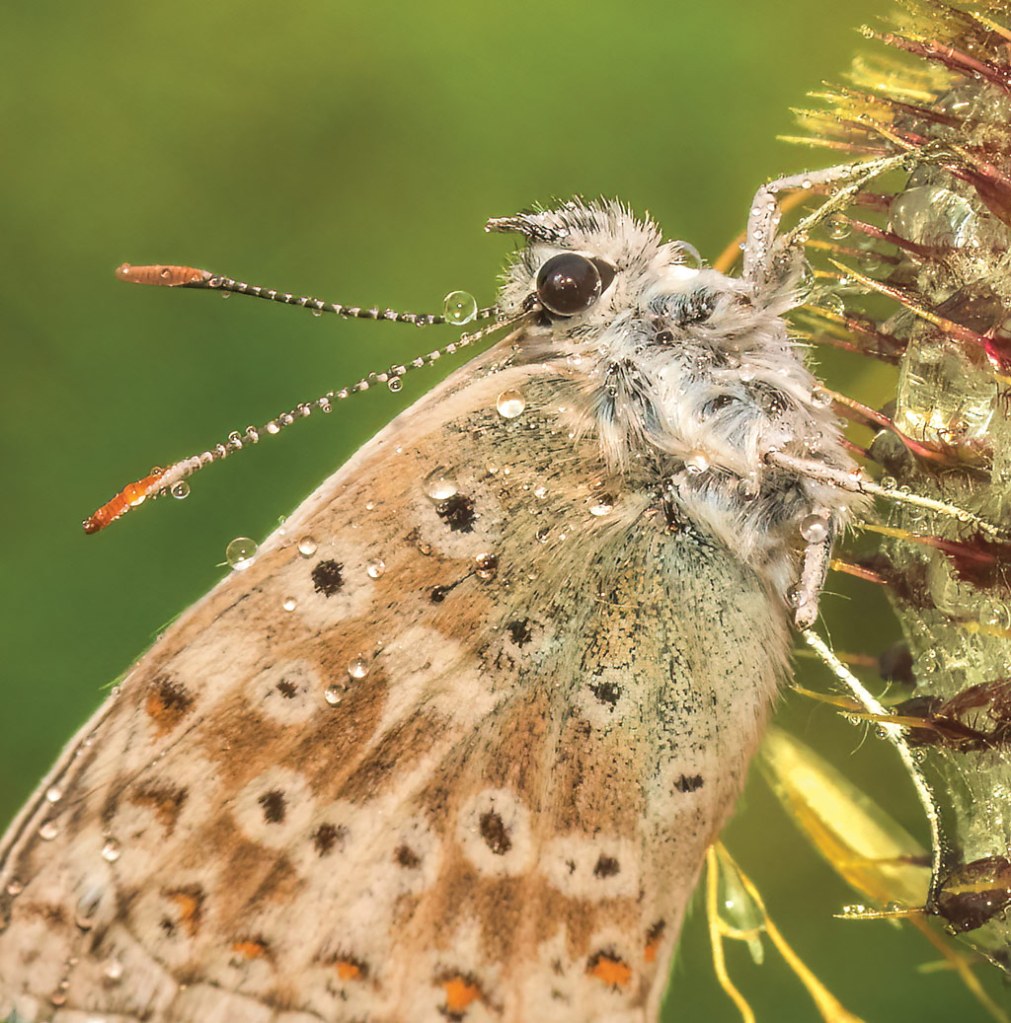
5. Ask for help
Members of the butterfly fraternity are really helpful and friendly, so feel free to contact them (Andrew uses Facebook and Twitter) and ask for advice. These people are often involved in conservation work, so help out where you can.
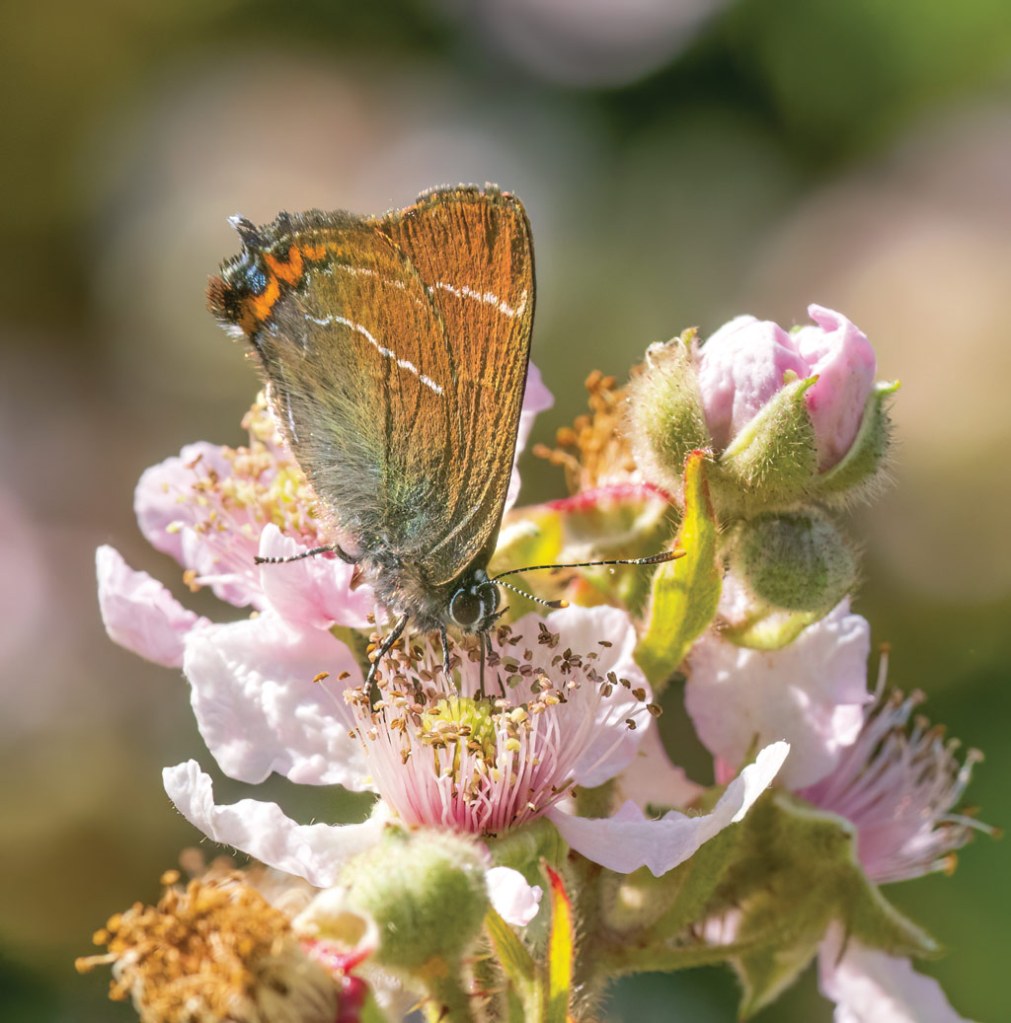
6. Push the boundaries
The flight sequences in Butterfly Safari are at the edge of what technology can do and, according to Andrew, at the edge of his skillset too! Going that extra mile can result in fresh, innovative work.
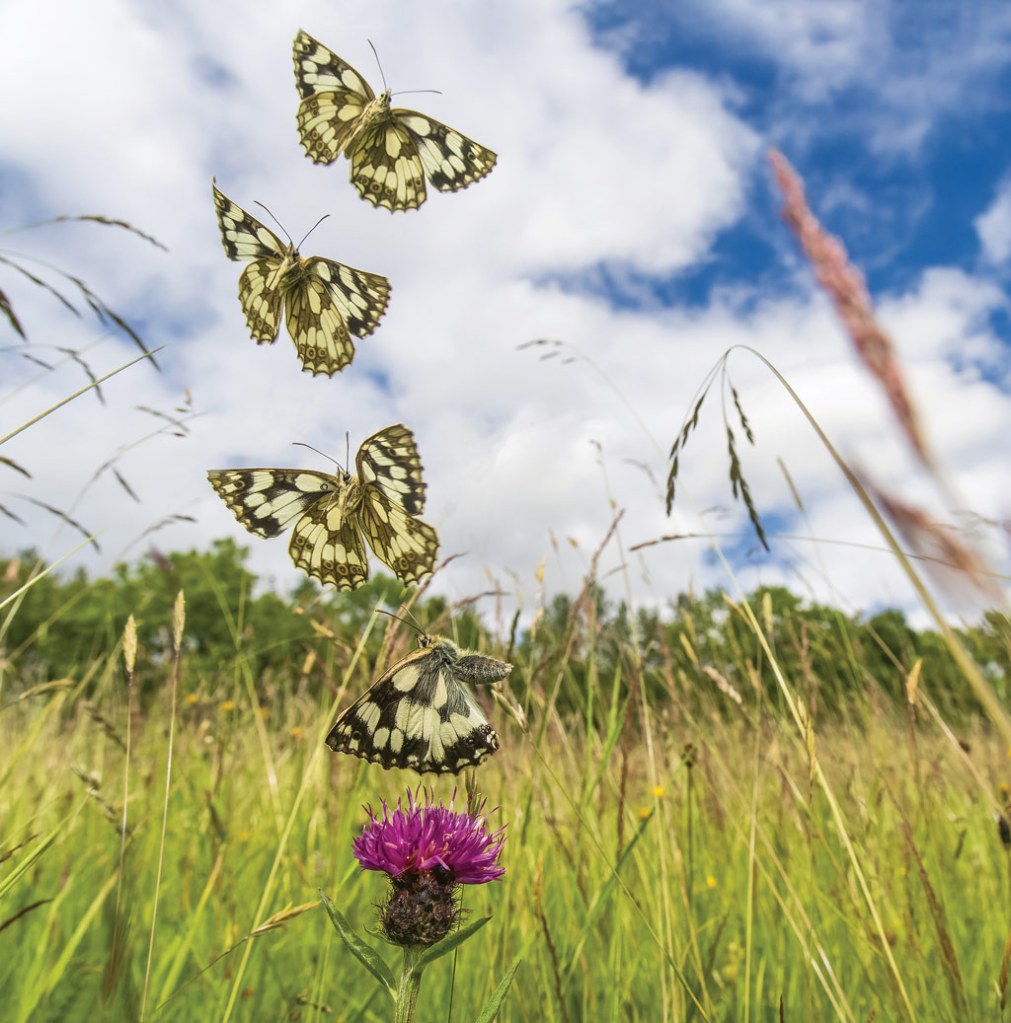
What is the best kit for butterfly photography?
Andrew shares the camera, lens, and lighting kit he uses to get his beautiful butterfly images.
Olympus OM-1
At the start of the project Andrew was using an Olympus OM-D E-M1 Mk II, but soon progressed to a Mark III, an OM-D E-M1X and, more recently, an OM-1. He enjoys, among other things, the in-camera focus stacking capabilities and burst rate.
 OM System 90mm f/3.5 Macro lens
OM System 90mm f/3.5 Macro lens
When people ask Andrew what his ‘butterfly lens’ is, he laughs and replies, ‘All of them!’ His kit includes a 12-100mm, 40-150mm, 150-400mm and a 60mm Macro. Recently, however, he’s been using the OM System 90mm f/3.5 Macro and believes it to be a ‘game-changer’.

Paramo Katmai shirt
Andrew learnt the hard way that a long-sleeved shirt and a pair of long trousers are essential when it comes to photographing butterflies ‘in the field’. The first time he ventured out in shorts and a T-shirt he came home ‘wearing’ three ticks. It is also important to wear a hat to protect against the sun.
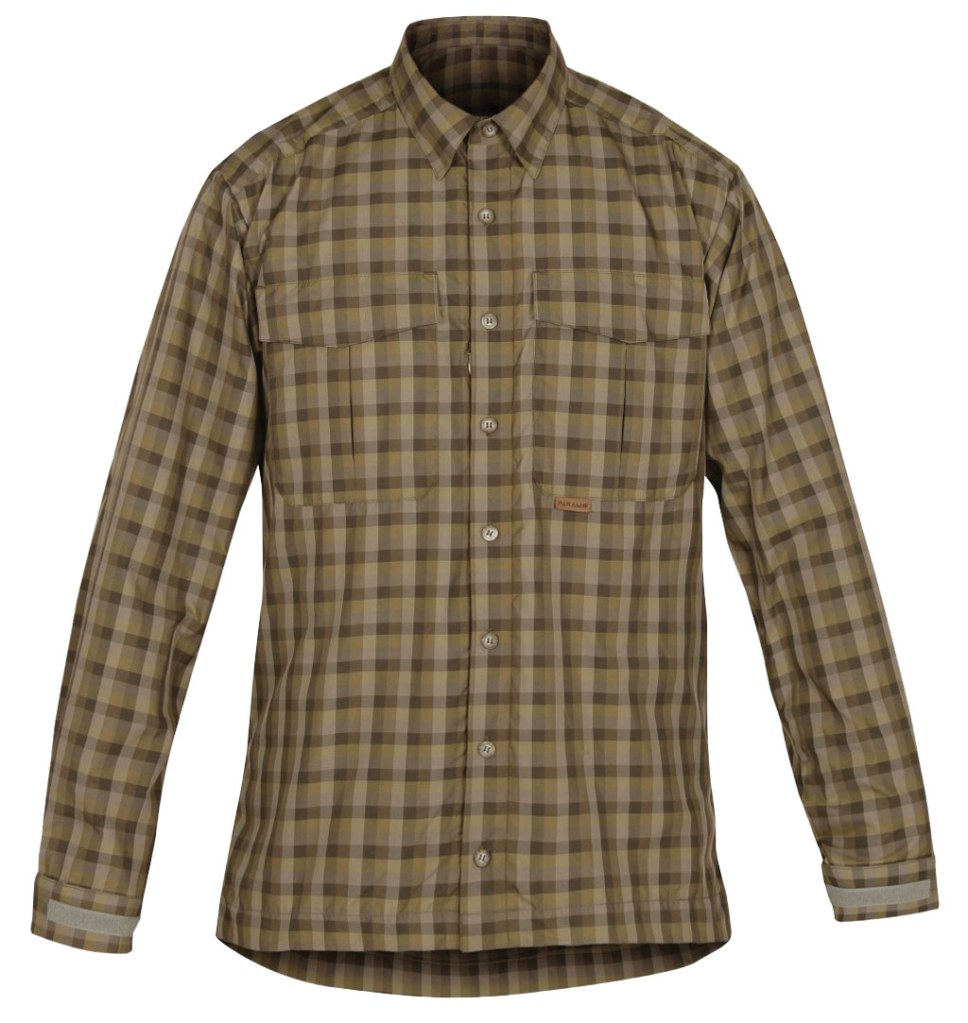
Godox LED64 video light
While Andrew used available light for most of the images in Butterfly Safari, he did occasionally supplement this with extra light from a small LED panel (especially on cloudy days). In the coming months Andrew will be venturing into the world of flash.
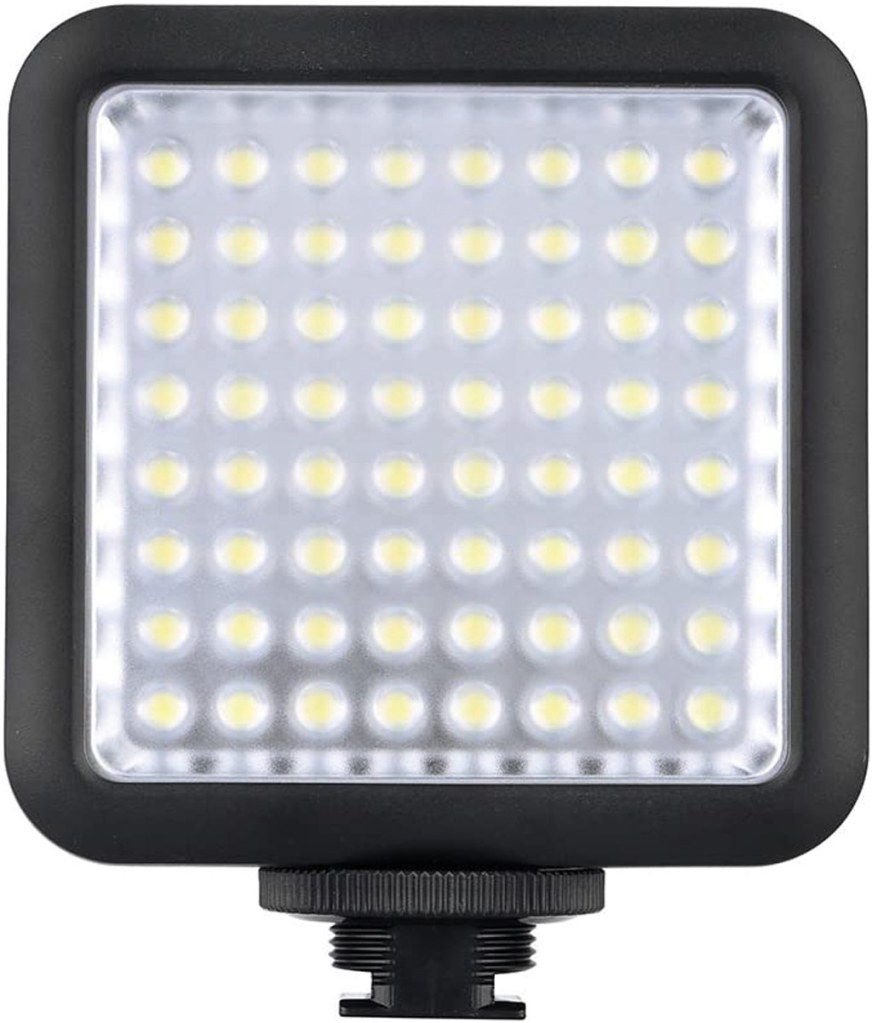

Andrew Fusek Peters is a wildlife and landscape photographer based in South Shropshire. His photos regularly appear in the national papers and magazines, and he is on commission to the National Trust documenting the wildlife on the Long Mynd. His books include Hill & Dale, My Shropshire Year, Upland and Butterfly Safari. Andrew is an OM System brand ambassador.
Check out his website and follow him on Instagram
Further reading

